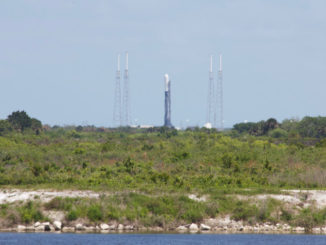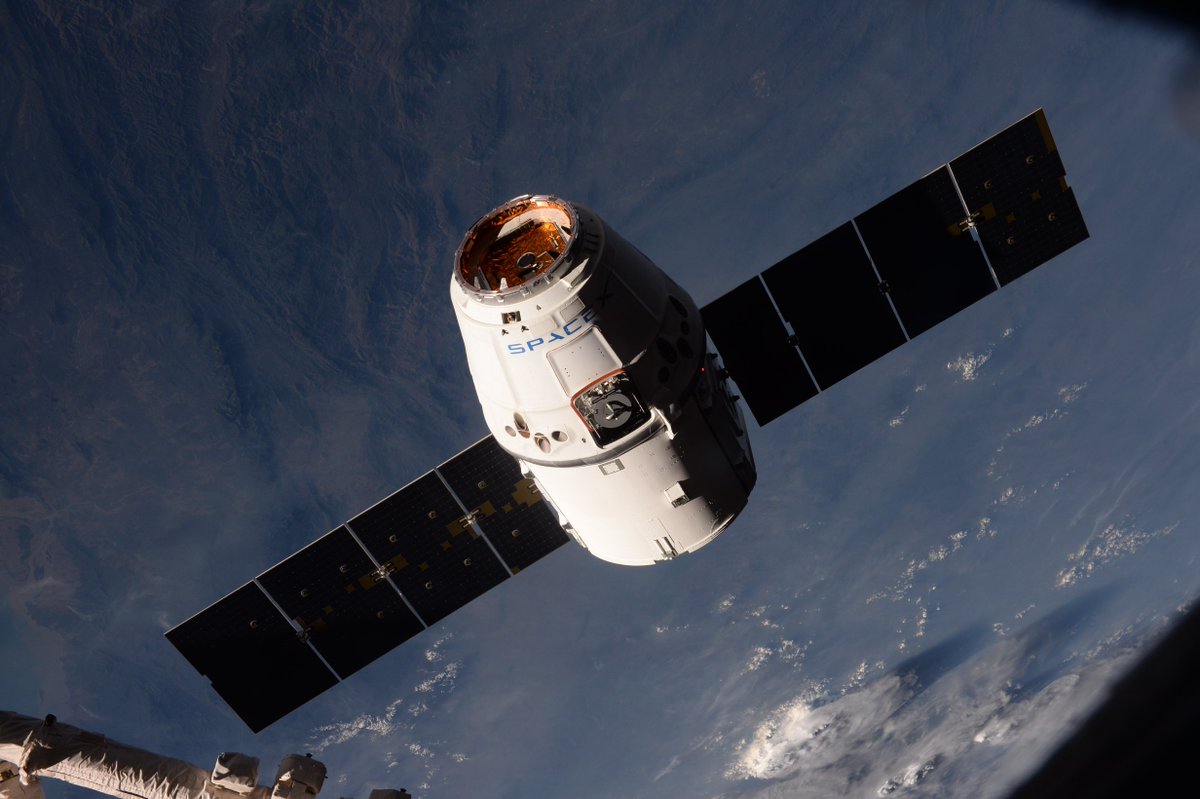
Running a day late after aborting a rendezvous to resolve a navigation glitch, SpaceX’s Dragon cargo craft made a smooth final approach to the International Space Station on Thursday, floating in range of the research lab’s robot arm for capture to deliver 2.7 tons of supplies and research experiments.
The Dragon spacecraft took four days to travel to the complex after blasting off from the Kennedy Space Center’s launch pad 39A on Sunday, hauling food rations, space station repair equipment, and science investigations designed to monitor Earth’s ozone layer, study lightning and test out new automated navigation tools for a future satellite servicing mission.
The 23-foot-long (7-meter) Dragon supply ship approached the space station from below, pausing at predetermined hold points to allow for status checks by ground controllers. Mission control centers in Houston and at SpaceX headquarters in Hawthorne, California, gave a green light for the spacecraft to move to a capture box around 10 meters, or 33 feet, beneath the outpost.
European Space Agency astronaut Thomas Pesquet unlimbered the space station’s Canadian-built robotic arm to grapple the Dragon cargo carrier at 5:44 a.m. EST (1044 GMT), a few minutes earlier than projected in Thursday’s timeline.
Capture of the SpaceX-owned supply vessel occurred as the space station sailed over the northwest coast of Australia.
“Looks like we’ve got a great capture,” radioed space station commander Shane Kimbrough, who assisted Pesquet. “Thomas did a great job flying it.”
“Great job with Dragon capture, and sorry about the delays,” responded astronaut Mike Hopkins from mission control in Houston. “Now the real work starts.”
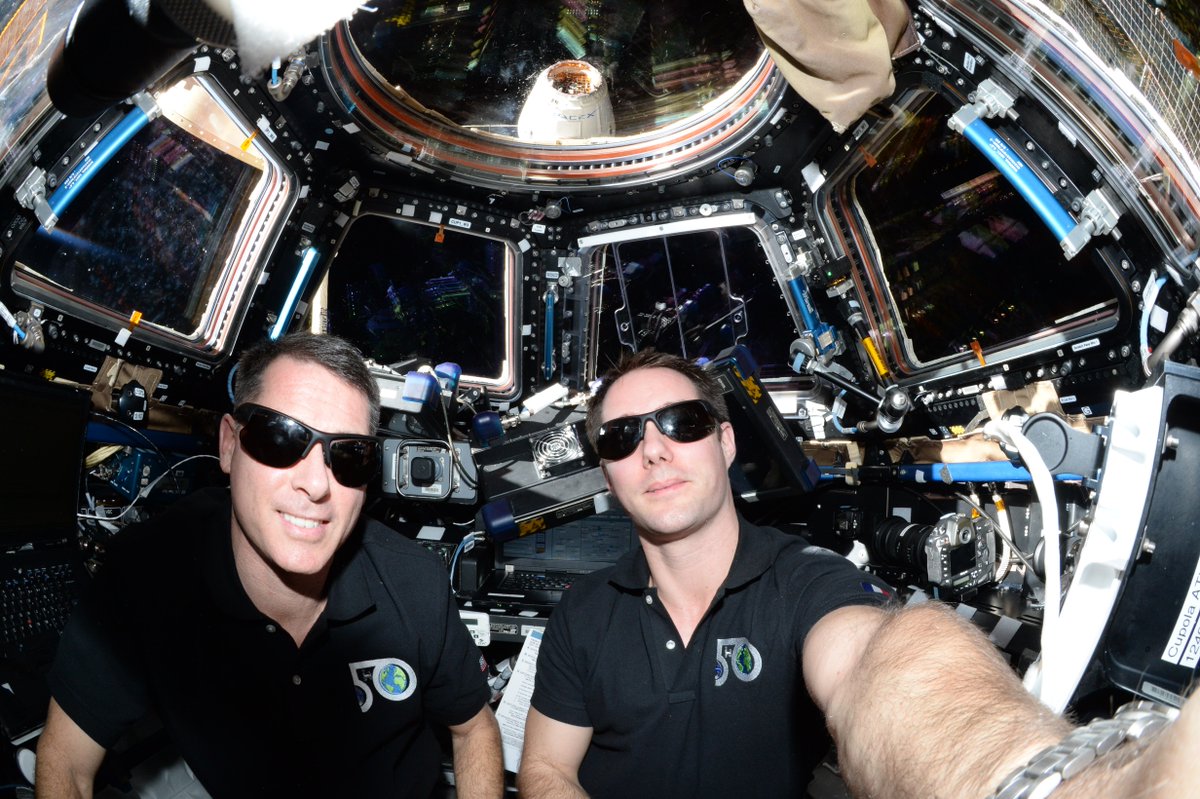
The mission delivered a record payload of scientific hardware for a SpaceX resupply mission, a manifest that includes 40 mice researchers will study to learn about bone healing in microgravity, a field that might have applications for victims with catastrophic bone injuries and patients with osteoporosis.
“We’re trying to understand what happens in the body as the bones start healing,” said Rasha Hammamieh, the rodent research project’s chief scientist from the U.S. Army Center for Environmental Health Research.
The military is co-sponsoring the bone health experiment, with an eye toward learning lessons that could help injured soldiers.
“Up in space, you lose bone,” said Melissa Kacena, co-investigator for the bone experiment and an associate professor of orthopedic surgery, anatomy and cell biology, and biomedical engineering at Indiana University. “In fact, astronauts lose about 1 to 3 percent of their bone density in a month. Someone with advanced osteoporosis loses closer to 1 percent per year.”
Kacena added that scientists want to test drugs on rodents that might be able to “rebuild your bone systematically, so it could have applications not only for bone healing, but also for osteoporosis.”
Astronauts on the space station will euthanize the mice and return them to Earth for comparison with a control group that remained on the ground.
Bacterial and stem cell researchers also have a stake in the mission.
“We are excited to put MRSA, which is a superbug, on the International Space Station and investigate the effects of microgravity on the growth and mutation patterns of these bugs,” said Anita Goel, chairman and science director of Nanobiosym, which developed the experiment with the Center for the Advancement of Science in Space.
“I have this hypothesis that microgravity will accelerate the mutation patterns. If we can use microgravity as an accelerator to fast forward and get a sneak preview of what these mutations will look like, then we can esssentially build smarter drugs back on Earth.”
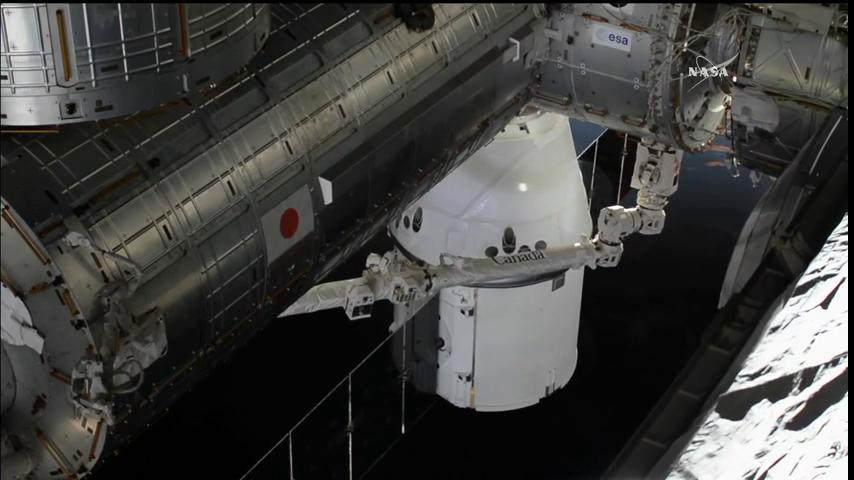
The station’s robotic arm placed the Dragon spacecraft on the Earth-facing port on the Harmony module a few hours later, and bolts drove closed to create a firm connection. Station astronauts planned to verify no leaks between the station and Dragon spacecraft, then open hatches leading into the supply ship later Thursday to begin unloading time-sensitive specimens and research payloads.
“Dragon has now officially arrived at ISS,” Pesquet said. “We’re very happy, indeed, to have it on-board and very much looking forward to the goodies, and the tons of science of cargo it carries.”
Thursday’s capture marked the 10th time a Dragon spaceship has reached the space station, counting a demonstration flight in 2012.
The Dragon spacecraft automatically aborted an attempted rendezvous Wednesday due to an incorrect value in the capsule’s relative GPS navigation system. SpaceX engineers fixed the problem in time for another approach Thursday.
While astronauts unpack Dragon’s pressurized cabin, the station’s robotic arm will pull two research experiment platforms and a mounting base out of the ship’s external payload bay for placement on the outpost’s huge structural truss.
One of the payloads is NASA’s $92 million Stratospheric Aerosol and Gas Experiment 3, or SAGE 3, an ozone monitor that comes with a separate ESA-built “hexapod” mounting plate designed to point the instrument at Earth’s limb, or horizon, at sunset and moonset.
The sunlight and moonlight passing through the layers of the upper atmosphere will help tell scientists about the condition of the ozone layer and allow researchers to track pollutants and particles suspended high above Earth.
SAGE 3, developed by NASA’s Langley Research Center in Virginia, is the latest in a series of ozone measurement sensors developed by NASA since 1979. Previous space missions studying ozone showed a decline in the distribution of the gas over Earth’s poles, and researchers tied the ozone depletion to chlorofluorocarbon, a chemical used in cleaning agents, refrigeration and air conditioning.
An international treaty called the Montreal Protocol that went into force in 1989 banned chlorofluorocarbons, and scientists have observed the depletion stop and watched the ozone layer begin to recover.
“How does SAGE 3 fit into that? We’re going to make measurements from the space station that show the recovery is on track,” said Michael Cisewski, SAGE 3 project manager at NASA. “I think that, from a science perspective, it doesn’t get any better than that.”
“SAGE 3 will also measure other important stratospheric gases and atmospheric aerosols, which are components of pollution that also impact the radiation balance of our planet,” said Michael Freilich, director of NASA’s Earth science division.
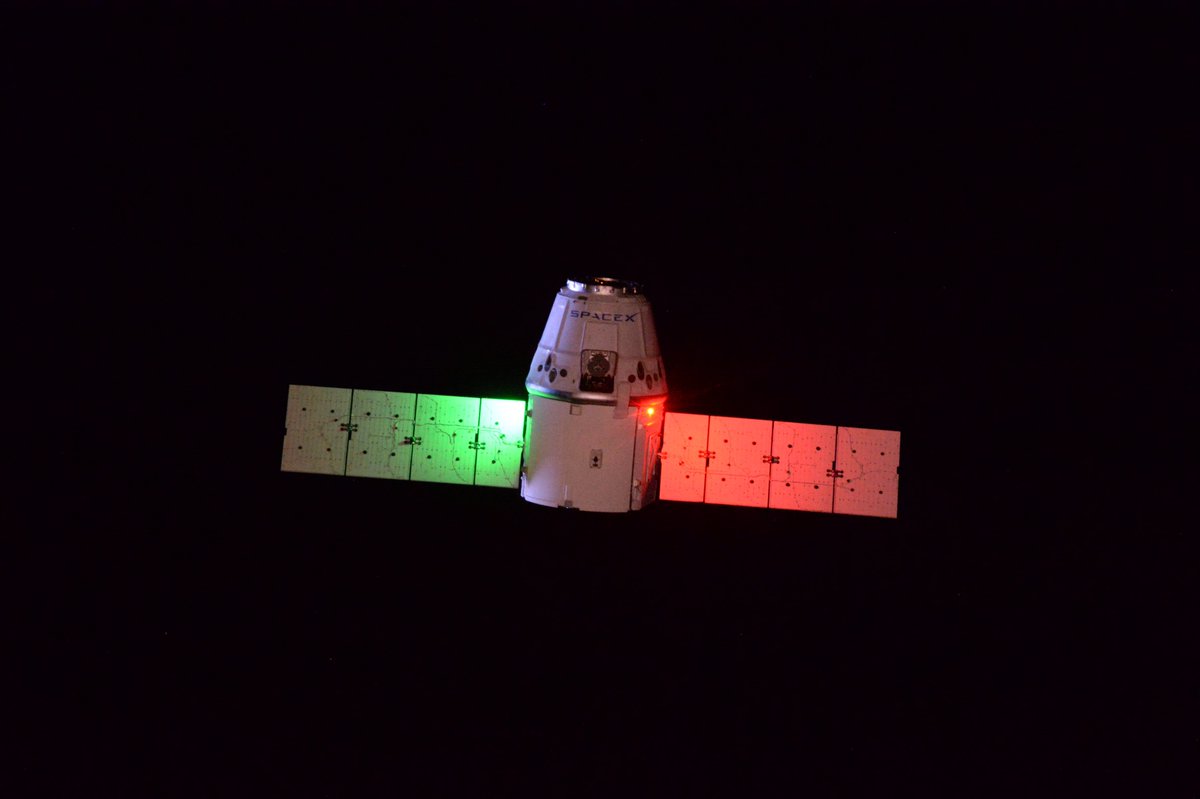
The other experiment package carried inside the Dragon capsule’s external bay is sponsored by the U.S. military’s Space Test Program, hosting more than a dozen investigations for NASA and the Defense Department.
Among STP-H5’s investigations are NASA’s Raven autonomous space navigation demonstration designed to support future satellite servicing missions and NASA’s Lightning Imaging Sensor.
The Raven payload is made up of three sensors — optical, infrared and laser trackers — to autonomously follow visiting cargo vessels arriving and departing from the space station.
Benjamin Reed, deputy director of NASA’s satellite servicing program at Goddard Space Flight Center, called Raven a “three-eyed” instrument.
“The Raven module will be observing visiting vehicles as they approach in all three wavelengths,” Reed said. “We will be generating range, bearing and pose estimates of those visiting vehicles on-board with sophisticated algorithms and on-board processing, based on the input that the sensors are receiving.”
Raven is a follow-up to a NASA experiment that tried out satellite refueling techniques using a boilerplate test panel outside the space station.
The satellite servicing demonstrations will refine the technologies needed for future robotic missions to refuel, refurbish, upgrade and reposition satellites, beginning with NASA’s Restore-L spacecraft in development for launch in 2020 to gas up the aging Landsat 7 environmental observatory in orbit.
Raven will try out the navigation equipment needed for Restore-L, and missions like it, to approach another object in orbit without any input from the ground and latch on to it, even if the target was never designed for a docking.
Landsat 7 was launched in 1999 before any such refueling mission was ever proposed, so it is not equipped with markings or a docking port.
“These technologies are quite difficult, and that is why NASA is taking the lead, pushing the envelope, (and) doing the hard work first,” Reed said. “Once we have developed it on missions like Raven, we will then transfer that technology to U.S. industry that is interested in taking this on commercially.”
The Lightning Imaging Sensor, managed by NASA’s Marshall Space Flight Center in partnership with the University of Alabama in Huntsville, will take pictures and log lightning strikes from the space station’s perch nearly 250 miles (400 kilometers) above Earth.
Based on a spare camera made for the U.S.-Japanese Tropical Rainfall Measuring Mission, the instrument cost $7 million to refurbish and will detect lightning day and night in a belt between 56 degrees north and south latitude.
“Lightning actually occurs somewhere on Earth some 45 times every single second,” Freilich said. “Understanding the processes which cause lighting and the connections between lightning and subsequent severe weather events like convective storms and tornadoes … are keys to improving weather predictions and saving lives and property in this country and throughout the globe.”
The Dragon spacecraft will remain at the space station for around 30 days, detach in late March and re-enter the atmosphere for a parachute-assisted splashdown in the Pacific Ocean, bringing home blood and urine specimens, the euthanized mice and other hardware needed back on Earth.
The Dragon’s arrival is the first of three resupply missions going to the space station in the next month.
A Russian resupply ship launched early Wednesday from the Baikonur Cosmodrome in Kazakhstan, on track for an automated radar-guided docking with the station early Friday.
Meanwhile, an Orbital ATK Cygnus cargo vessel is being prepared for blastoff March 19 atop an Atlas 5 booster from Cape Canaveral with another supply delivery.
Email the author.
Follow Stephen Clark on Twitter: @StephenClark1.



